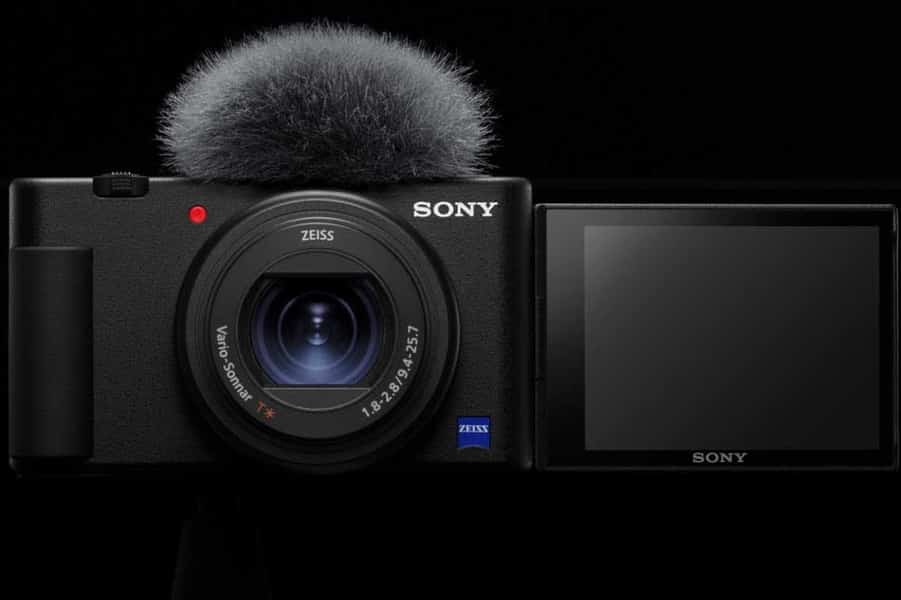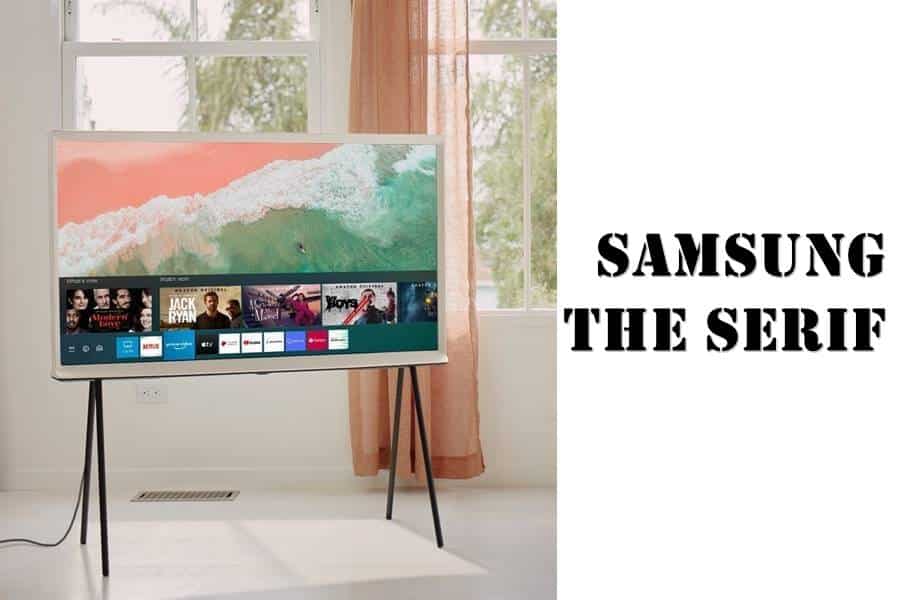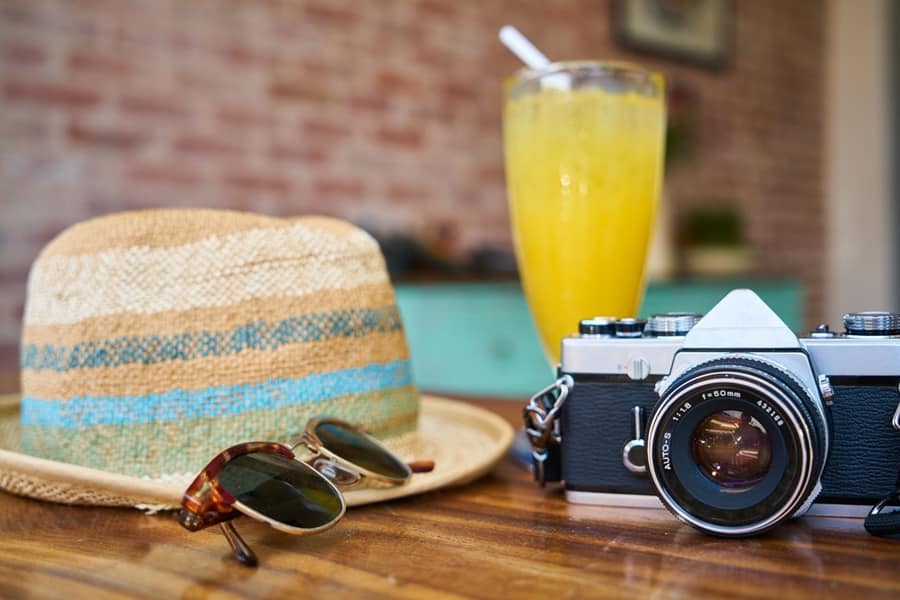Full-frame mirrorless cameras have become the standard for photographers and video makers now days. This is a misconception especially common among beginners who blindly believe in the magic of the full frame. Not every representative of these professions understands that a camera with an APS-C sensor or even an M 4/3 will be enough, or even better, for his tasks.
In the world of the photo industry, there are several companies that are stubbornly not going to enter the full-frame market and in their business, they achieve certain success, thereby moving progress forward. So, in early 2020, Fujifilm released a continuation of its top line – the Fujifilm X-T4 camera. Some might say that the camera looks like a minor upgrade, however, it’s not that simple.
In this Fujifilm X-T4 camera review, we will try to test all aspects of the camera related to both photo and video shooting, as well as try to answer the questions asked by our readers earlier.
Indeed, the Fujifilm X-T4 camera looks little different from its 3rd generation predecessor. However, upon closer inspection, you can see some differences. So, the block in which the viewfinder is located now does not protrude in front, as it was in the X-T3. On the top panel, in addition to the usual ISO control dials, shutter speed, exposure compensation and shutter release button, there is a new programmable button. This was made possible by an overall increase of 2.5 mm in thickness and 3 mm in width.
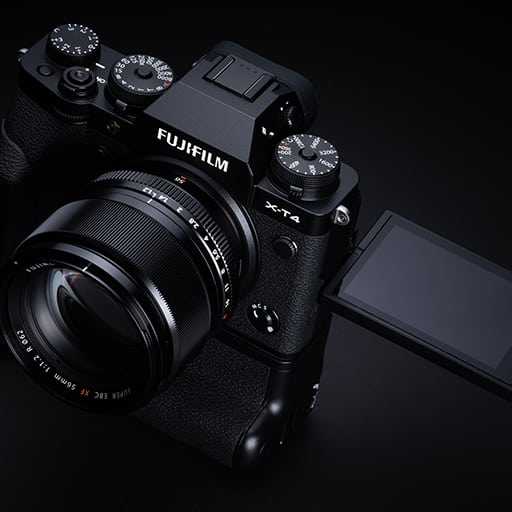
Speaking of the size of the case, it should be said that the grip has also slightly increased here. However, this still did not make it possible to conveniently control the camera, holding it with one hand.
Shutter speed control, two function dials in front and back, additional function buttons and switches are conveniently accessible with this grip. But the exposure compensation dial is no longer so convenient, but the reason for this is the rather tight movement of the disc, here you need to adjust a little. As for the control of the joystick, navigation pad or through the touch screen, you will have to hold it with your other hand.
If you hold the camera from the bottom with your little finger, then the control becomes a little more convenient and the grip is more reliable, but this method will not work for those with small hands. In my opinion, it would be necessary to change the shape of the handle in such a way that a stop appears under the third finger, this would make the grip more comfortable and reliable. However, a Small Rig cage can be purchased for increased grip and additional attachment options.
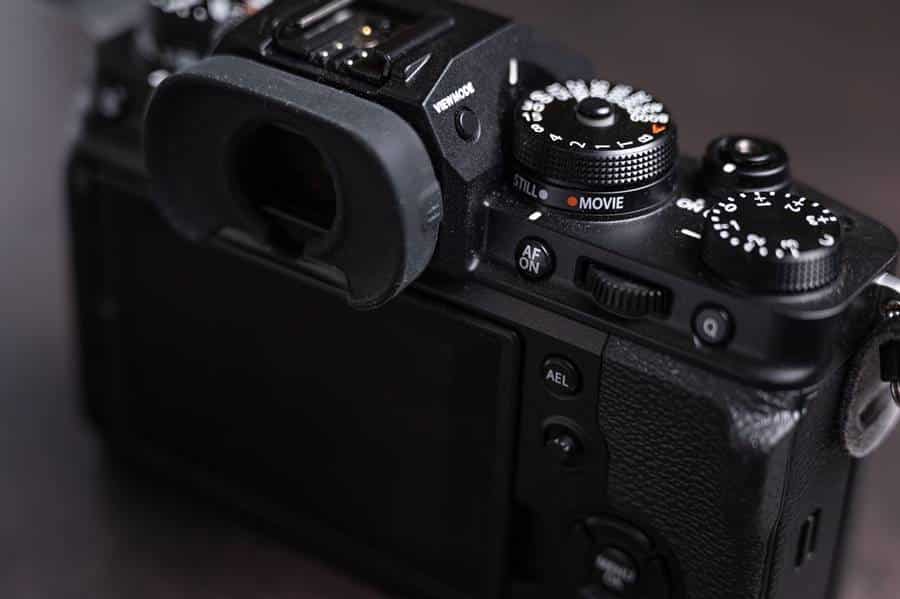
Not an immediately noticeable change, but a significant step towards the convenience of working with photo / video, was the shooting mode switch under the shutter speed wheel. Previously, it housed an exposure metering switch, and video mode could be turned on with a switch under the ISO wheel, but now there are only burst, bracketing and HDR modes.
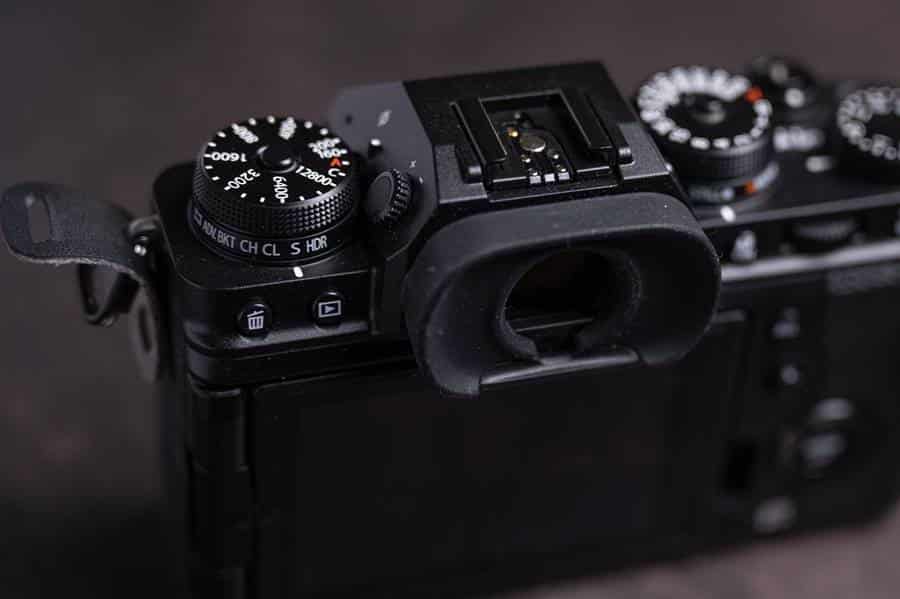
In addition, the photo and video modes have their own menu, that is, now we can save the settings separately for video and photo. It is very convenient.
And, of course, the main innovation, in addition to the matrix stabilizer, which we will talk about in a separate section, is the swivel screen. The X-T3 had an inclined screen. I will not take responsibility and say which is better, because each of the solutions, be it tilt or swivel mechanism, has its own functional advantages. Unfortunately, there is no universal and at the same time convenient solution. But now among the owners of the X-T4 there will be selfie lovers and YouTube bloggers.
I must say that the ability to hide the screen by turning it over to the body is a very useful option and a plus for reliability during transportation. By the way, if we talk about the reliability of the camera, then there is protection against moisture and dust. The body itself is metal, according to the specifications, it can work in the temperature range from -10 to +40 degrees Celsius.
Another nice little thing is the new eyecup mechanism. Now, to remove it, you must slightly press on the sides. Thus. accidental loss of this important accessory is completely excluded.
On the front panel, in addition to the already named function button and control wheel, there is a bayonet lock and a focus mode switch.
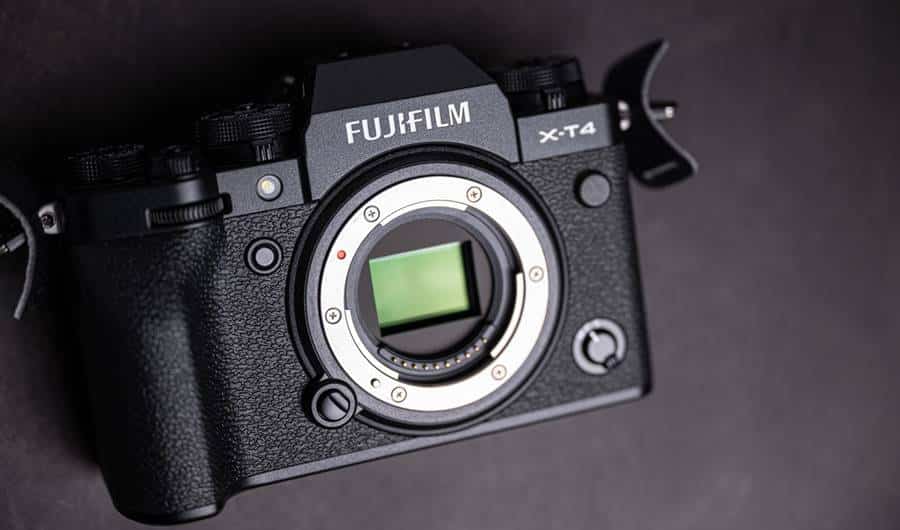
On the right, under the flap, there are two slots for memory cards with UHS-II support, in fact, as was the case with the previous version, however, now there is a possibility of a full backup, and even if you shoot video in the highest quality, it will be backed up to the second card without restrictions and decrease in quality. It is very cool.
There is some bad news among the connectors – the headphone output has been removed. Instead, the camera was equipped with a USB Type-C to Mini Jack adapter. A very strange decision and it looks even more strange against the background of the fact that it became possible to charge from an external power source during operation. Thus, you have to choose – either monitoring or external power. Perhaps double will work, but I don’t have it, so I couldn’t check it. But standard headphones for an Android smartphone with a USB Type-C connector do not work.
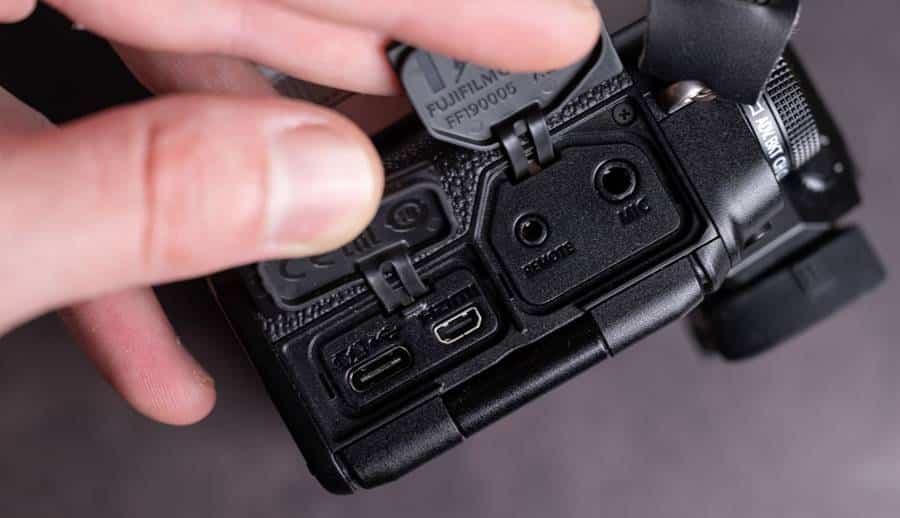
External power supply during operation is a very useful feature. In practice, I did not notice that the camera is charging, however, during the work for about a couple of hours, the charge level did not decrease, but remained at the same level. In order to also charge during operation, you must use an external source with Power Delivery support. By the way, there is no battery charger in the package now, there is only USB charging, so now the battery can only be charged inside the camera, or you can additionally purchase a charger. Along with the camera announcement, the company introduced a dual-battery charger that can also be powered by USB and has a charge indication with an accuracy of 1%. Such an additional accessory will cost $55.
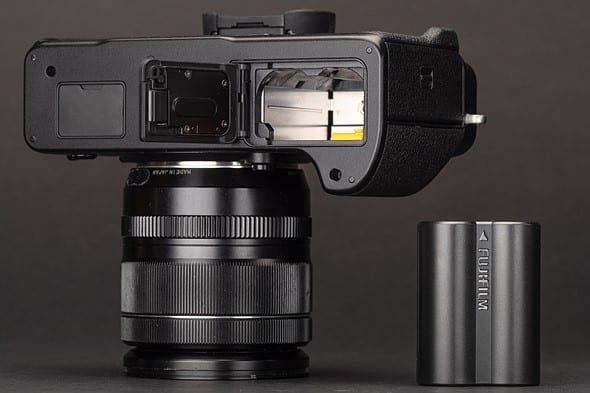
The good news is that the camera now has a bigger battery. According to the manufacturer, one charge is enough for 600 frames in economy mode or for 85 minutes of 4k video at 30 FPS. I failed to test how many shots the camera can take on a single charge, because every time I tried to go out to shoot with a full battery charge. Nevertheless, on one of the days of testing, I shot about 800 frames in RAW format, using focus tracking, mainly with sighting through the screen and in economy mode. But the main thing here is that on this day the charge remained at 80 percent. When it comes to video shooting, a single charge lasts for over 100 minutes of 4K video at 30 frames per second with maximum f-log quality, tracking focus on the face and eyes, matrix stabilizer and also in economy mode. The performance is impressive.
To control the exposure parameters, you can use both the corresponding dials and additional function wheels in front and behind. However, aperture control in photo mode using the wheel is not available, only using the wheel on the lens. But in the video mode, it is already possible to control the aperture with the front wheel on the camera.
There are two menus for adjusting the camera parameters – the main one, which is called up by pressing the central button of the navigation pad, and the quick Q, which is assigned to the corresponding button on the rear panel.

In general, the menu seemed very inconvenient to me, but this is a purely subjective opinion. For example, to turn off the exposure preview for working with external pulsed light, you need to go to the settings – display settings and find the corresponding item there. To format the memory card, you need to go to the user settings.
Not entirely logical locations, in my opinion, I have been looking for these items for a long time. And there are quite a few such oddities. Nevertheless, it is still possible to figure it out without studying the manual.
There is a separate menu for working with flash. There is a setting for flash functions (sync, power). Red-Eye Removal Adjustment – Electronic, Flash, and Shared available. TTL block mode – by the last flash or by the metered flash. Indicator setting (curve translation, actually backlight setting) – AF-assist, LED-illuminator, shared (depends on flash used). The main settings are Fujifilm master flash group setting. CH setting – setting the channel for controlling Fujifilm wireless flash units.
I tested the Fujifilm X-T4 with a Profoto A1X flash, specifically for Fujifilm cameras. The specs of the flash on the Profoto website have not yet indicated X-T4 support, but all functions are fully functional, including TTL. As for the flash control, in this case it is more convenient to control it through the Profoto A1X itself, and not through the camera menu.
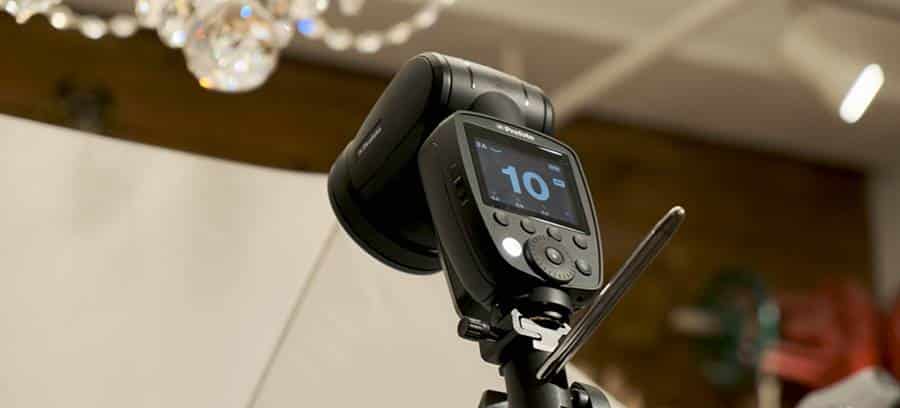
A long press on the DISP / BACK button starts setting up the controls and here the main wealth of the camera opens – incredible customization possibilities.
The camera has the ability to reprogram almost all the controls existing on the body, you can even reconfigure gestures on the touch screen. Thus, for example, the same exposure preview can be assigned to one of the function buttons.
The number of functions that can be assigned is very extensive. The camera has an almost unlimited number of possible combinations of control settings. However, I did not change anything, in principle, all those settings that are used by default are logical and convenient.
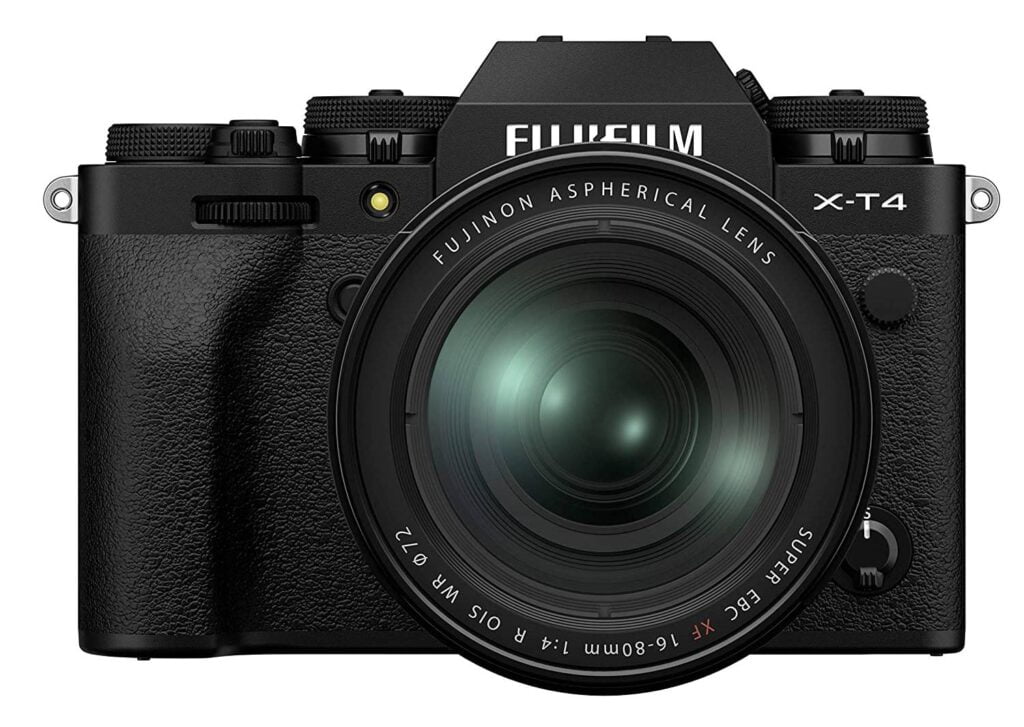
Fujifilm X-T4 Camera Specifications
| Matrix | 26.1 MP, APS-C, X-Trans BSI CMOS 4 |
| Low Pass Filter | No |
| Image Size | 6240 x 4160 |
| CPU X-Processor | 4 |
| Memory Cards | Two slots. SD, SDHC and SDXC (UHS-II compatible) |
| Stabilization | Sensor shift based, up to 6.5 stops using OIS lens |
| Viewfinder | OLED, 3.69MP |
| Shutter Type | Mechanical shutter; electronic shutter |
| Excerpt | 1/32000 to 30 seconds |
| Shooting Speed | Up to 15 frames per second with mechanical shutter. 30 fps with electronic shutter |
| Exposure Metering | TTL 256-zones |
| ISO Sensitivity | Standard ISO160 to ISO12800. Expandable from ISO80 to ISO 51 200 |
| Autofocus | 425 points (phase), hybrid |
| Video | – 4K (4096 × 2160 and 3840 × 2160) / 60fps, up to 20 minutes. – 4K (4096 × 2160 and 3840 × 2160) / 30fps, up to 30 minutes. – 1920 x 1080 (slow motion); 240fps. |
| Codecs | – MPEG-4 / H.264, HEVC / H.265 – Save video to card and HDMI output F-Log, HDR (HLG). 10-bit 4.2.0 per card, 10-bit 4.2.2 HDMI output. |
| Monitor | Swivel, 3 “, 1.62 Mp |
| Connectors | USB Type-C, HDMI Type-D, Audio-in 3.5mm, 2.5mm jack for remote control. |
| Wireless connection | Wi-Fi, Bluetooth. |
| Battery | NP-W235, 600 frames (CIPA method), 85 minutes of 4K video recording. |
| Dimensions and weight | 134.6 x 92.8 x 63.8 mm, 607 grams. |
The Fujifilm X-T4 camera received a quad-core X-Processor 4 processor, a 26.1-megapixel X-Trans CMOS 4 matrix, an autofocus system, an ISO160-12800 range and an extended ISO80-51200. If you were familiar with the X-T3, then here you can see the complete correspondence of the characteristics. However, the novelty has received a matrix stabilizer, a swivel screen, a more powerful battery, the possibility of external power supply during operation.
Separately, it is worth noting the new shutter, which has increased its resource to 300 thousand actuations (the X-T3 had 150 thousand) and the burst speed has now become 15 frames per second with a mechanical shutter (it was 11 fps). In addition, the X-T4 received a slow-motion Full-HD video of 240 frames per second, the X-T3 had only 120. And also, a new film, ETERNA BLEACH BYPASS, appeared in the novelty.
The Fujifilm X-T4 screen has become not only rotatable, but also received a higher resolution of 1.62 million pixels, while the viewfinder remains completely the same – it is OLED, 0.5″ with a resolution of 3.69 megapixels. The viewfinder, in my opinion, did not require updating, it is really cool here, no lag was noticed during operation.
Now, from dry technical parameters, let’s finally move on to testing the camera. And let’s start with the most interesting innovation – the matrix stabilizer.
Fujifilm X-T4 Stabilizer
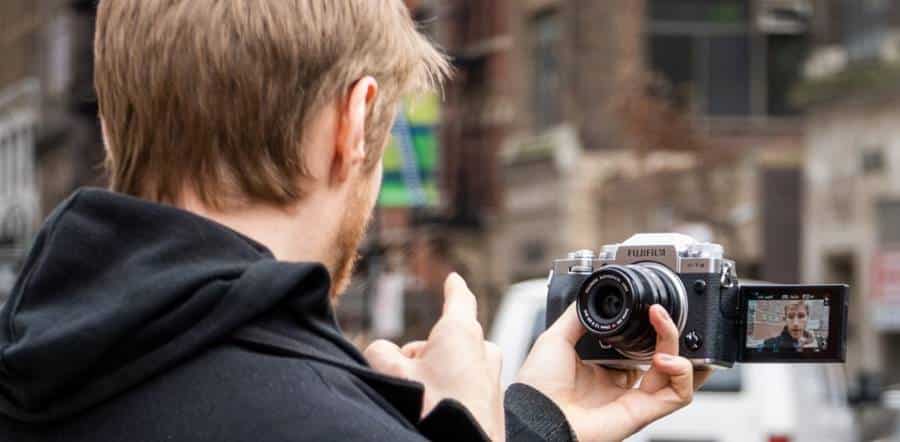
Matrix stabilization is something that the previous generation was sorely lacking. If a rotary or tilting display is a controversial issue, then intra-camera matrix stabilization is definitely a plus. A plus for photography and a huge plus for video. The company claims stabilization offers an advantage of up to 6.5 stops when using OIS lenses. The camera came to our test with the XF35mm F2 R WR lens, which is not equipped with an optical stabilizer. Thus, the test below demonstrates the effectiveness of the matrix stabilizer only.
A 35 mm lens on a camera with an APS-C sensor corresponds to a minimum shutter speed of 1/50, which provides a clear image without the use of any stabilizers. Below are test cases with double crop.

Increasing the shutter speed by approximately three stops to 1/6 does not result in blur – 10 out of 10 shots are sharp.
Increasing the shutter speed by one more stop to 1/3 leads to a decrease in successful frames – 7 out of 10 frames are sharp. This is already a very good supply.
Another stop of magnification to 1 / 1.6 also gives the result of 6-7 sharp shots out of 10. That is, the camera already gives a margin of 5 stops. I was able to get sharp test shots even at 2 seconds shutter speed, but this requires a strong stand, a firm hand and preferably a heavier lens. My X-T4 35/2 lens kit has a fairly small overall weight, and the heavier the lens, the less subtle movements in the frame will be noticeable. Of course, this is more typical for video shooting, however, it also affects long exposure photography.

The work of the matrix stabilizer is closely related to the lens and works according to the focal length. Therefore, to use third-party lenses, an additional menu item is provided, where it is necessary to set the focal length of the lens, then the stabilizer will work out as efficiently as possible.
Among other things, distortion correction settings are available here, as well as saving up to 6 lenses in the camera’s memory.
There are three stabilizers available when shooting movies. Optical if an appropriate lens is used, matrix and digital. When using the digital stabilizer, the frame is cropped, in addition, the video with the digital stabilizer can be characterized by distortion of the corners, so I do not particularly recommend using the digital stabilizer.
Additionally, the X-T4 has a gimbal boost function, but it is only applicable for handheld shooting of static subjects.
ISO and Dynamic Range
Now let’s move on to more in-depth technical tests. And let’s start with the noise of the matrix. The camera received the same ISO range as the previous generation: base ISO 160-12800 and extended ISO 80-51200. To visualize how the matrix makes noise, in our reviews we usually do a synthetic test in the RawDigger program. What it is: at all ISO values, frames are created at the same shutter speed and aperture with the cover closed. Next, RAW files are opened in RawDigger and the values are written out for the red (green or blue – this is not so important) channel.
Here we see that below the value of the base ISO 160 the matrix makes more noise, but this is insignificant and there will be no noticeable difference in the final image. After ISO 400, the noise level falls to ISO640, then the noise level rises. Not quite clear drop after ISO 25600, however, again, the drop is insignificant and in the final image it will not be noticeable.
As I said, ISO 80-160 noise levels are absolutely the same and visually indistinguishable. Moreover, the absence of any noticeable noise level continues all the way up to ISO 1000.
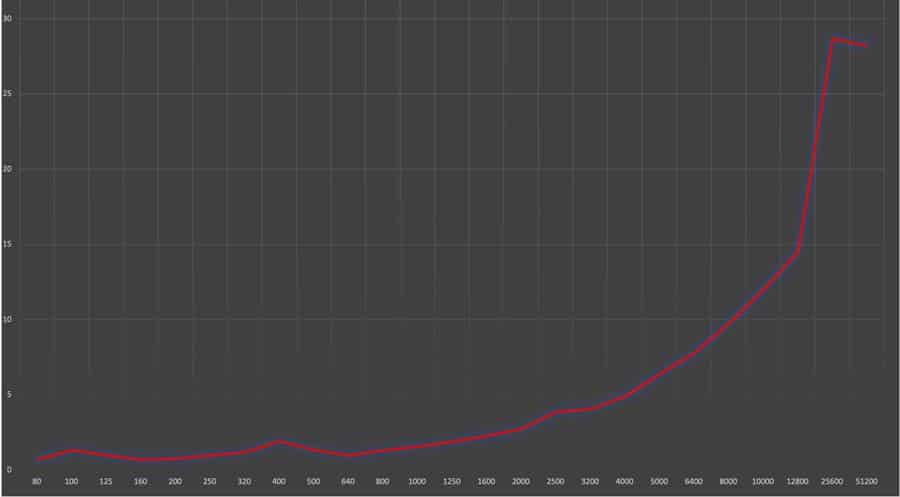
At ISO 1250, a subtle monotonous noise appears in the light areas of the frame.
Around ISO 3200, color noise appears, however, this still does not have a detrimental effect on the character of the image.
At ISO 6400, the grain of noise becomes larger, noise appears in the dark parts of the frame, and small details lose their clarity. This value can be called the threshold. Further, the influence of noise becomes more and more noticeable, the detail deteriorates with each new value.
However, the image quality at ISO 12800 is suitable not only for publications on the Internet, but also for large format printing. The picture quality is amazing.
The values ISO 25600-51200, one might say, are already inoperative values, nevertheless, when converted to b/w, the picture will be quite high quality.
Fujifilm X-T4 is equipped with fairly high quality in-camera noise reduction, which can be adjusted in the main menu or in the quick menu by pressing the Q button.
The available range is -4 to +4. The value 0 is set by default and corresponds, so to speak, to the average level of noise reduction. It is noteworthy that the noise canceling function cannot be turned off. Even at -4, the camera removes color noise without reducing graininess. With the maximum noise reduction level of +4 at high ISO values, noise is invisible, however, the detail suffers greatly.
Dynamic Range Expansion is clearly effective, especially when the task is to show details in the highlights of the frame. However, it is better not to overuse this, as the manifestation of noise becomes more significant. However, for most shooting scenarios, using this function set to Auto is an excellent choice.
Autofocus and Continuous Shooting
The camera can shoot with a mechanical shutter in a range of shutter speeds from 15 to 1/8000 of a second, and don’t be confused by the lack of these values on the shutter speed dial. Just set it to T and change the shutter speed with the control wheel. In addition, if a certain value is set on the shutter speed dial, an intermediate value correction is available using the rear wheel.
With electronic shutter, the minimum shutter speed is 1/32000. The electronic shutter makes shooting absolutely silent and without vibrations (the main thing is not to forget to turn off the electronic shutter sound in the camera menu). However, I must say that the mechanical shutter is also quite quiet here.
The maximum burst speed is 15 frames with mechanical and 20 frames with electronic, and with a crop of 1.25, you can reach 30 frames per second with an electronic shutter. It should be noted that the extended ISO settings, i.e. 80, 100, 125, 25600 and 51200, are not available with the electronic shutter.

Burst shooting speed does not depend on what formats are being saved, but the burst duration already depends. At 8fps, I measured the buffer to hold 39 RAWs, 38 RAW + JPEGs and a whopping 268 JPEGs – for measurements I used an SD card at 170Mb/s. Thus, when saving JPEG, you can shoot a series of frames for more than 30 seconds.
With either mechanical or electronic, no blackout is observed at maximum speed. At any speed, autofocus remains operational. By default, burst exposure works on the first frame, however, the camera can shoot even at maximum speed with exposure tracking. For this to work, you need to turn off the AE shutter in the settings menu in the button / dial settings section – I must say, the location of this function is not entirely logical.
There is a fun Pre-Shot function that can be turned on for the electronic shutter and CH high speed shooting mode. With this function, when you half press the shutter button, the camera starts taking frames and saves the last 10, after pressing the shutter button completely, the series begins. A useful option for capturing fleeting events, especially when you do not know at what moment the same action will take place.
As I already wrote, autofocus works in continuous shooting even at maximum speed. The camera has a hybrid focus. The autofocus system has 2.16 million phase detection sensors that cover the entire frame.
To simplify positioning, 117 or 425 points are available, but in essence zones. The number of areas depends on the current focus mode, and the number can be adjusted manually in the main menu.
There are four focusing modes – “Single point”, “Zone”, “Wide / tracking” and “All”. To select a mode, you need to enter the quick menu by pressing the Q button or the main menu “AF / MF” – “AF mode”. And also, here you can select “Focusing area” – specify the position and size of the area. The most convenient way is to select the “All” mode and then change the size and type of the zone with the joystick.
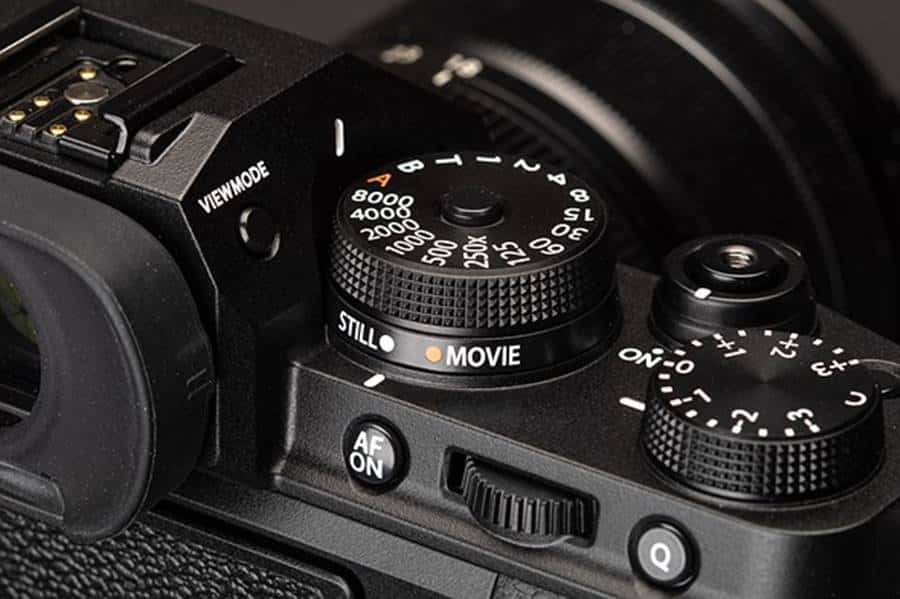
When you press the joystick, you can adjust the size of the focus area and the type of area with the front or rear dial, they work the same way. The joystick also moves the focus point. The maximum number of 425 points is available only in the “one point” mode, the rest only 117.
Manual / single / servo focusing is changed using a switch in front – it is very convenient and can be done without even looking.
The Fujifilm X-T4 focusing system is able to detect faces and eyes in the frame. A new function key on the top panel is assigned by default to enable / disable this feature. And in the main menu or in “Q” you can not only enable / disable, but also adjust. You can enable face detection, face detection and eye detection (the camera will try to cling to the closest eye), as well as priority for the left or right eye. If there are several faces in the frame, the camera will automatically make a choice on which one to focus on, and using the joystick, you can already switch to another face.
For tracking focus, five presets are available and the ability to save your own preset. “Set 1 universal” meets most requirements, so I used it in the tests.
In the 8 frames per second continuous shooting mode with face detection autofocus, 4 frames out of 18 were missed. The next test demonstrates the work of autofocus also with face detection, however, the movements are no longer linear and the burst speed is 15 frames per second.
9 out of 33 frames where the face was present turned out to be with a miss. The decrease in the percentage of accuracy is associated not only with more complex movements in the frame, but also with the slowness of the lens, since the burst speed here is almost twice as fast. For the test frequency, one more series at 15 frames per second.
This longer 69-frame burst showed 10 frames with a noticeable miss. The result is very good.
Now let’s test the face and eye detection system under different lighting levels. In this test, I used a 150-watt LED illuminator with an octa-box and honeycomb, the light level can be adjusted in percentage. The exposure parameters are fixed in the camera.
At maximum illumination, the detection quickly and accurately identifies the face and eyes. With a 50 percent reduction in light output, it feels like the system works even faster. If the light power is reduced by another 50 percent, you can notice a slight decrease in the accuracy of determining the eye. The subsequent decrease in the light level by 50 percent led to a slowdown and decrease in the accuracy of the detection system, however, no serious problems were noticed.
If there are presets for autofocus in photo mode, then for video, only focus speed and tracking sensitivity are available. By default, the focus speed is 0, you can slow down -5 or speed up +5.
In general, we can conclude that autofocus is very good here, and given the possibility of high-speed shooting up to 30 frames per second, the camera can be used even in sports photography. The noticeable sluggishness in some tests is due to the speed of the lens, which we got, which is far from the fastest. And also, for this reason in the video, you can see a significant breath of focus.
About Video
The Fujifilm X-T4, like the X-T3, is one of the few cameras that can record 10-bit video with 4: 2: 0 color subsampling directly to a memory card. When using an external record, the camera is already capable of recording 4: 2: 2 videos. Taking into account certain innovations, the X-T4 has become even closer to video makers. Judge for yourself: matrix stabilizer, rotating screen, more powerful battery, simultaneous recording and charging, convenient photo / video switch, simultaneous saving to both cards. All this makes work not only productive, but also more comfortable. But the lack of a headphone output looks very strange against this background.
During video shooting, all exposure settings are made using two functional wheels. The front wheel is responsible for ISO, aperture and exposure compensation – the function is changed by pressing the wheel. The rear wheel is responsible for shutter speed only. And also, exposure parameters can be controlled using an additional touch menu on the screen.
The ISO, shutter speed and exposure compensation dials do not work by default, however, they can be enabled from the menu. I was pleased with the presence of shutter speeds of 1/48 and 1/96, thus, this allows you to set the classic shutter speed, and, for example, not 1/50 for shooting 24 frames per second.
At 4K resolution, like DCI, 60 frames are available, 200Mb/s bitrate and 1.18x crop, but strong Long GOP frame compression is used and the time is limited to 20 minutes. At the same time, the camera is capable of storing both f-log and HLG (HDR video) on a 10-bit 4.2.0 card and, as mentioned earlier, with the possibility of backup to a second memory card. For 4K 30fps, 400Mb/s bitrate is available, no crop, maximum All-Intra compression quality, and the duration increases to 30 minutes.
The maximum frequency with which the X-T4 can shoot is 240 frames, the X-T3 had 120. In this mode, the camera shoots a slow-motion Full-HD video – how many times to slow down is indicated in the camera menu.
When shooting video, only base ISO160-12800 is available. Moreover, the minimum value depends on the recording mode – for F-Log it is ISO 640, for Hybrid Log Gamma – ISO 1000.
F-log recording expands the dynamic range and provides ample opportunities for subsequent correction, therefore the minimum sensitivity in this mode is ISO640, at which the matrix produces the maximum dynamic range.
Since the picture has low contrast when recording F-log, the developers have come up with a special function “F-Log Viewer Assistant”, with it the colors and contrast on the camera screen look natural, which is very convenient. To color correct F-log, you need to download LUTs from Fujifilm’s official website and install them in the video editor. There are 4 types:
- The first XT4_FLog_FGamut_to_ETERNA-BB_BT.709_33grid_V.1.00 is an imitation of ETERNA BLEACH BYPASS film.
- Second XT4_FLog_FGamut_to_ETERNA_BT.709_33grid_V.1.00 – ETERNA film simulation
- The third one (XT4_FLog_FGamut_to_FLog_BT.709_33grid_V.1.00) transforms the color space from F-Gamut, but leaves a logarithmic gamut. The application of this 3D LUT provides ample opportunities for video contrast processing while maintaining the color of the image.
- The fourth LUT (XT4_FLog_FGamut_to_WDR_BT.709_33grid_V.1.00) is designed to create a neutral image using the entire dynamic range. The image contrast with this LUT is slightly lower than that of the Eterna.
The X-T4 can shoot Hybrid Log Gamma (HLG) video, which is suitable for viewing on HDR TVs.
Among other things, as in the photo, all 12 types of film are available for video shooting.
- PROVIA
- Velvia
- ASTIA
- CLASSIC CHROME
- PRO Neg. Hi
- PRO Neg. Std
- CLASSIC Neg.
- ETERNA / CINEMA this tape can be obtained by applying LUT when recording in F-log.
- ETERNA BLEACH BYPASS – the same, such an image can be obtained using the LUT.
- ACROS
- MONOCHROME
- SEPIA
Due to the presence of various imitations of films, in particular ETERNA/CINEMA, you can shoot video immediately, which does not require additional time and high power for post-processing, as it would be in the case of shooting in F-Log.
Fujifilm X-T4 Camera Photo Gallery
Conclusion
I tested the camera for about two weeks. I even got used to the uncomfortable menu, and it became familiar to me in principle. I can say for sure that the camera turned out to be cool, the same as the X-T3, only even cooler. And it became cooler because there appeared a powerful stabilizer, a more durable battery, a more comfortable grip, the possibility of external power supply during operation, slow-motion video 240 frames per second, a photo/video switch and a separate menu for each of the modes, more reliable and high-speed gate. But the thought never leaves me that something is missing here to call this camera a truly full-fledged new version. Maybe a higher resolution matrix? Maybe 6K? Maybe a wider ISO range? There is still room for improvement.
Not without drawbacks, of course. The headphone output has disappeared, now connection is possible only through an adapter. The grip has improved, but still not perfect. You cannot turn off noise reduction and lens distortion correction. Lack of charging included.
And here’s the question. Should you upgrade to the X-T4? If you own an X-T2 or a lower-end Fujifilm mirrorless camera, then definitely yes. But the transition from the third version does not look so straightforward. You are shooting a video, you need a stabilizer or you lack a rotating screen, then yes. If you are a photographer, then you should think about the advisability of such an update.
If this is your first camera and you are determined to step into Fuji land, then the X-T4 is a great investment. And not only because the camera has great capabilities, but the whole system itself looks very attractive. Currently, there are 27 native lenses that are not as expensive as other systems. There are also two high-end, expensive MKX lenses, the 50-135mm T 2.9 and 18-55mm T 2.9 series. In addition, the company is constantly updating the firmware and adding new functions (by the way, while I was writing this review, an update was released for the X-T4 with some bug fixes). Choose a camera not only for the characteristics of the camera itself, but also for the perspective of the system as a whole.

Thanks for your attention. Do you like this review format? What would you like to add and see in our next reviews? I would be glad to hear your comments.








